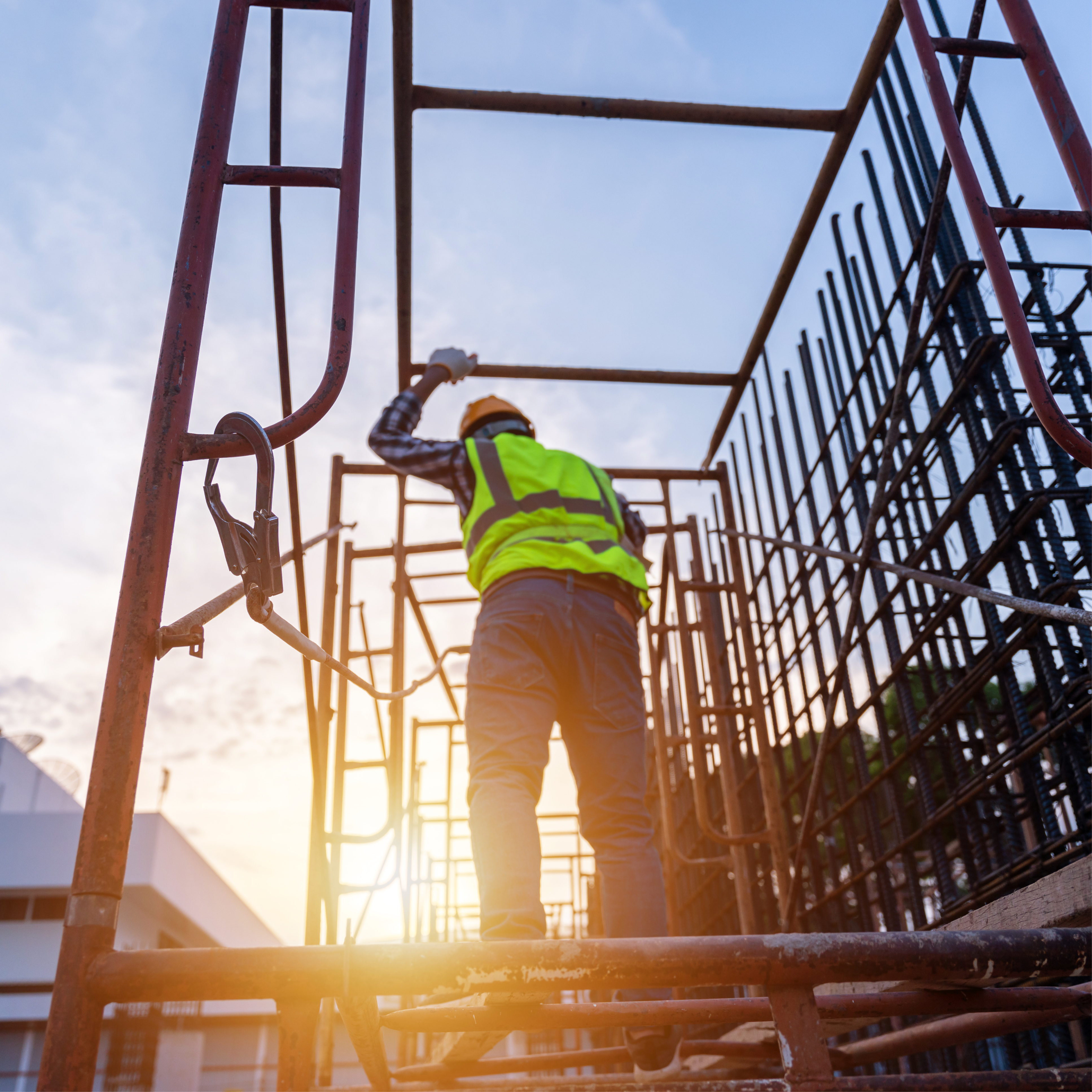Description
Elements and Performance Criteria
|
Elements describe the essential outcomes. |
Performance criteria describe what needs to be done to demonstrate achievement of the element. |
||
|
1 |
Identify task requirements. |
1.1 |
Read work order and associated drawings and consult with relevant persons to determine the proposed work-at-heights task, including where and how work is to be carried out, and the equipment or plant to be used. |
|
1.2 |
Participate in the development of the safe work method statement (SWMS) for the specified task. |
||
|
1.3 |
Select appropriate work-at-heights control measures including required fall restraint devices and/or fall arrest devices in accordance with workplace and regulatory requirements. |
||
|
1.4 |
Determine location of anchor points for harness-based work to safely access required work area. |
||
|
1.5 |
Review completed SWMS and clarify issues with relevant persons. |
||
|
|
|||
|
2 |
Access and assess work area. |
2.1 |
Select personal protective equipment (PPE), check for serviceability and report problems. |
|
2.2 |
Identify unstable, fragile or brittle work surfaces and implement control measures to prevent a fall from height. |
||
|
2.3 |
Check fall protection equipment, including required fall restraint and fall arrest devices to ensure serviceability and report problems. |
||
|
2.4 |
Identify, select and install signage and barricade equipment in accordance with SWMS or relevant safe work procedure. |
||
|
2.5 |
Install/fit fall protection equipment, including fall restraint devices and fall arrest devices as appropriate, within the limitations of licensing requirements, level of authority and SWMS. |
||
|
2.6 |
Ensure required fall protection, scaffold and barriers have been adequately installed and where necessary certified, in accordance with regulatory and workplace requirements. |
||
|
2.7 |
Connect to fall protection equipment, including temporary anchor points, without being exposed to a risk of a fall from height. |
||
|
2.8 |
Consult with relevant persons to confirm fall protection equipment and safety systems are correctly fitted, adjusted and installed, and are appropriate to the task. |
||
|
2.9 |
Access work area safely and move and place tools, equipment and materials using methods that eliminate or minimise the risk of falling objects. |
||
|
|
|||
|
3 |
Conduct work tasks. |
3.1 |
Undertake work tasks in compliance with the SWMS and workplace requirements. |
|
3.2 |
Traverse between anchor points while remaining connected to the fall prevention system and protected from a risk of a fall from height. |
||
|
3.3 |
Use PPE appropriate to the task and in accordance with manufacturer requirements. |
||
|
3.4 |
Maintain communication with relevant persons while working at height. |
||
|
3.5 |
Keep fall protection equipment in place and adjust to allow for movement during work. |
||
|
3.6 |
Keep fall prevention equipment adjusted to prevent falling off or through a structure using the restraint technique. |
||
|
3.7 |
Keep scaffold/work platform components and fall barriers in place during work. |
||
|
3.8 |
Monitor control measures and consult with relevant persons to respond to changing work practices or site conditions. |
||
|
3.9 |
Exit from work area removing tools and materials in compliance with worksite procedures, safety and environmental requirements. |
||
Assessment requirements
Performance Evidence
To demonstrate competency in this unit, a candidate must meet the elements and performance criteria by working safely at heights above 2 m on three occasions, using different fall protection equipment/devices on each occasion.
One occasion must include a restraint technique (anchor point) system with a minimum of three anchor points.
The candidate must access the work area, traverse between anchor points and exit from the work area.
Knowledge Evidence
To be competent in this unit, a candidate must demonstrate knowledge of:
- workplace and regulatory requirements for working safely at heights under applicable Commonwealth, state or territory work health and safety (WHS) legislation, Australian Standards and codes of practice:
- hazard identification and risk control
- job safety and environmental analyses (JSEAs)
- safe work method statements (SWMSs)
- safety data sheets (SDSs)
- safety manuals and instructions for plant, tools and equipment:
- operation manuals
- manufacturer specifications
- safety signs and load charts for plant
- signage and barricades
- selection, fitting and use of personal protective equipment (PPE)
- environmental and worksite safety plans
- reporting problems
- processes for planning to work safely at heights:
- assessment of weather and ground conditions that may affect safety while working at heights
- assessment of conditions and hazards
- determination of work requirements
- identification of equipment defects
- inspection of worksites
- methods for identifying common faults with scaffold or work platform systems
- types, characteristics, uses and limitations of equipment used when working safely at heights:
- air compressors and hoses
- anchor points
- edge protection
- elevated work platforms (EWPs)
- fall arrest anchors
- fall arrest inertia reels
- guard rails
- hand and power tools including nail guns
- ladders
- power leads
- rescue equipment
- ropes
- safety harnesses, lanyards and attachments such as snap hooks and carabiners
- scaffolding
- shock absorbers
- stairways
- static line systems
- temporary anchor systems
- trestles
- safe methods for accessing work area, traversing between anchor points and exiting from work area including removing tools and materials when working at heights.
Source: Training.gov.au

